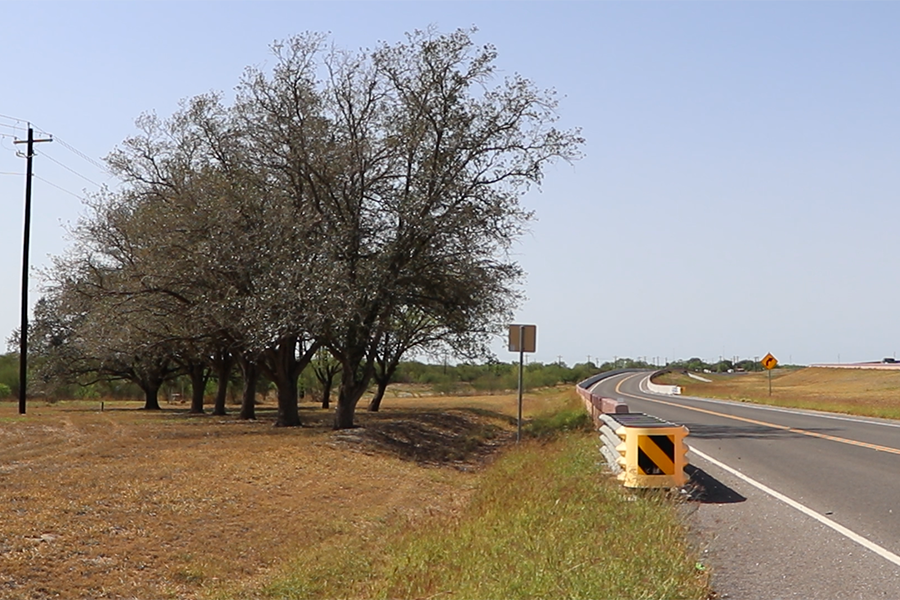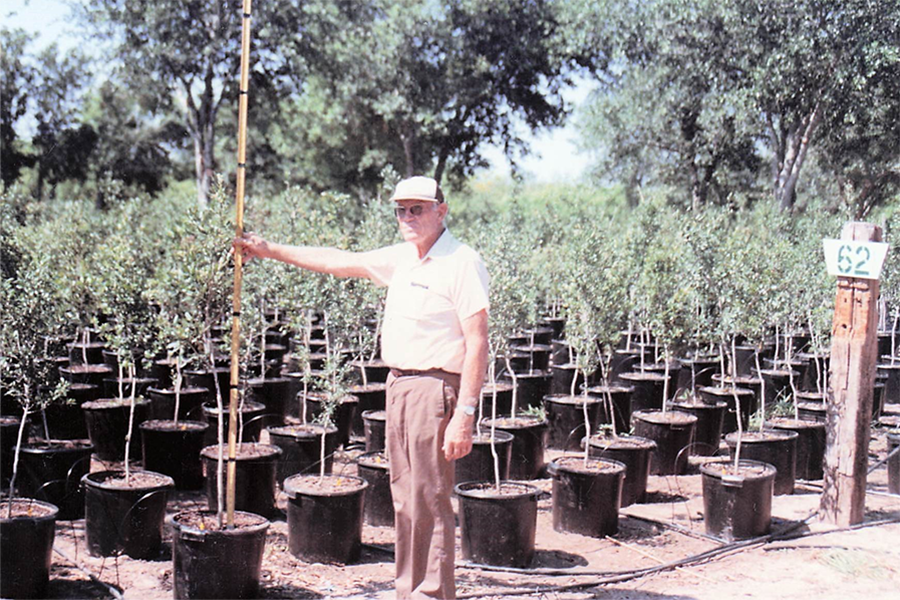
April 25, 2025
By Adam Hammons
PREMONT, Texas — Not all clones are science fiction. In a last second change to a highway project, TxDOT listened to the community to save a branch of Texas history.
Whether it’s the downtown of a big city or a zero-stoplight town, TxDOT works hard to listen and adapt to how projects affect communities. A perfect example of that was when TxDOT built the US 281 Relief Route in Premont in 2019.
The project called for the removal of a set of trees by a house on a bend of the road. Towards the end of the project, they got a letter from someone who said those weren’t just any trees. They were clones of the famous Treaty Oak in Austin.
“These trees are what I would consider to be one of the smaller stories that kind of make up Texas history,” TxDOT Environmental Project Planner Kimberly Amy said.
Amy remembers looking into the “fascinating history” of the trees that were planted in 1989 from cuttings of the real Treaty Oak. They came from local arborist Wash Storm who was known as the “King of the Live Oaks.” He worked to preserve the infamous Texas tree after it was poisoned.
“So this is one of those smaller stories that I believe should be saved, should be retold,” Amy said. “Because you're talking about someone that had an incredible amount of integrity and was selfless and wanted future generations to enjoy heritage trees. And we need people like that.”
The real tree in Austin fortunately survived its poisoning, which was not a guarantee when these clones were planted. Away from their biological parent, the trees thrived in South Texas becoming the silent sentinels of the home next to the oncoming roadway.
So after hearing this story and working long hours, the project team found a way to save the trees, shifting the road and building a wall.
Amy said it’s a perfect example of how TxDOT listens to the community.
“We understood that this was something that was going to be important,” Amy said. “And I'm very proud of TxDOT that, not just our organization, but my district in Corpus Christi was responsive to the fact that this was important to the community.”
